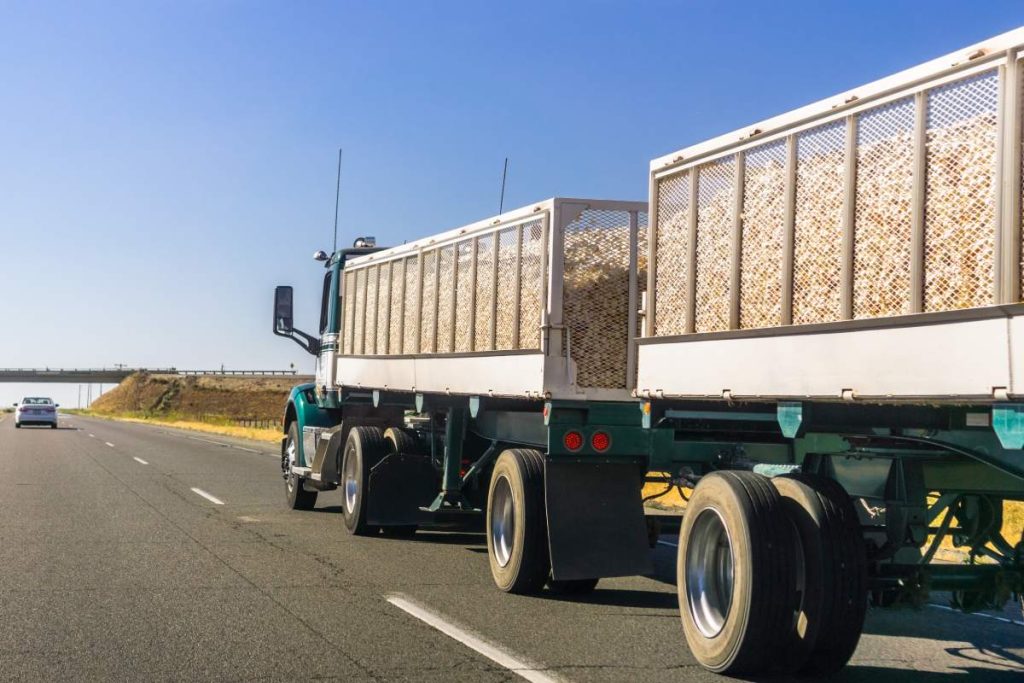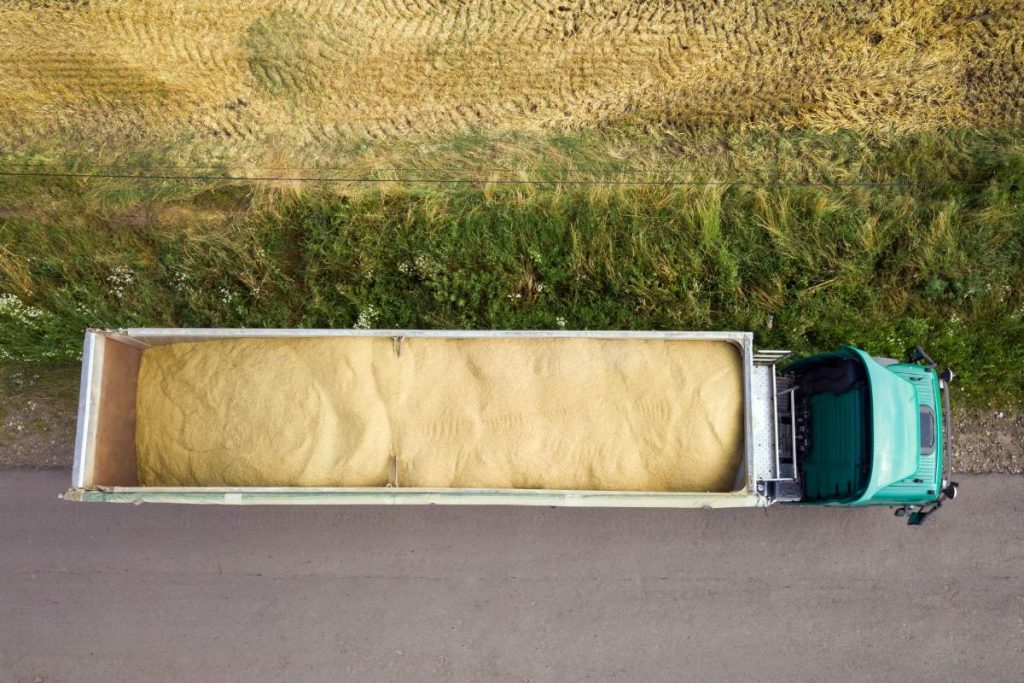Transporting grain and wheat efficiently is crucial for the agricultural industry, ensuring that produce moves smoothly from farms to markets and processing facilities.
The choice of an interstate grain transportation company can significantly impact this process, influencing costs, safety, and overall efficiency. With various factors to consider, from equipment quality to customer service, selecting the right transport provider can be a complex decision.
This guide will help you navigate the essential aspects of choosing the best transportation company for your grain, ensuring you make an informed decision that meets your logistical needs and keeps your supply chain running smoothly.
You might also read:
Safety Tips: Loading Ramps for Your Truck
How Do You Transport Grain and Wheat?
Transporting grain and wheat efficiently is crucial for the agricultural industry. Here’s a straightforward guide on how it’s done:
1. Harvesting and Initial Storage
Harvesting: Grain and wheat are usually harvested using combines, which are machines that cut and thresh the crops. After harvesting, the grain is collected and prepared for transport.
Initial Storage: Before transport, the grain is often stored temporarily in bins or silos at the farm. This helps in managing the grain until it can be moved to its next destination. Proper storage conditions are essential to prevent spoilage and maintain quality.
2. Cleaning and Conditioning
Cleaning: Grain needs to be cleaned before transport to remove any dirt, debris, or damaged kernels. This is done using equipment like grain cleaners or air blowers that sift out impurities.
Conditioning: Sometimes, conditioning is necessary to ensure the grain is at the right moisture level for storage and transport. Grains that are too wet or too dry can spoil more easily.

3. Transport Methods
Trucks: One of the most common methods for short to medium distances is using grain trucks or lorries. These vehicles are equipped with large containers or trailers that can carry a significant amount of grain. They are ideal for transporting grain from farms to local storage facilities or processing plants.
Rail: For longer distances, trains are often used. Grain is loaded into specialized railcars, known as grain hoppers. These cars are designed to handle bulk grain and can transport large quantities efficiently over long distances.
Ships: When grain needs to be transported internationally, ships are used. Grain is loaded into bulk carriers, which are large ships designed to carry dry cargo. The grain is often moved from the farm to a port facility, then transferred onto the ship using conveyor belts or elevators.
Pipelines: In some regions, pipelines are used to transport grain. This method involves using pneumatic pipelines or augers that push or blow the grain through a pipe. It’s not as common as trucks, trains, or ships but can be useful for specific logistical needs.
4. Handling During Transport
Loading: Proper loading techniques are essential to prevent damage and ensure efficient transport. For trucks and railcars, the grain is often loaded using augers or conveyor belts. For ships, the loading is typically done using cranes or specialized loading equipment.
Monitoring: During transport, it’s crucial to monitor the grain to ensure it remains in good condition. This might include checking the moisture levels and ensuring that the transport equipment is functioning correctly.
Unloading: Once the grain reaches its destination, it is unloaded using equipment like augers, elevators, or conveyor systems. The unloading process needs to be carefully managed to prevent spillage and ensure the grain is transferred safely.
5. Regulations and Safety
Regulations: There are various regulations regarding the transport of grain to ensure food safety and quality. These regulations might include standards for cleanliness, moisture levels, and the condition of transport equipment.
Safety: Safety is also a major concern. Proper handling procedures are crucial to avoid accidents and ensure that the grain is transported efficiently and safely.

How Much Does Interstate Grain Transport Cost in Australia?
The cost of interstate grain transport in Australia can vary significantly depending on several factors. Here’s a breakdown of what influences these costs and some average figures to give you a general idea:
1. Distance and Route
Distance: The farther the grain needs to be transported, the higher the cost. For example, transporting grain from Western Australia to the eastern states like Queensland or New South Wales will be more expensive than moving it within the same state.
Route: The cost can also vary based on the route taken. Major highways with better infrastructure might have lower costs compared to less developed routes that may require more time and fuel.
2. Transport Mode
Trucks: Road transport is a common method for interstate grain transport. The cost of using trucks depends on the distance, fuel prices, and the amount of grain being transported. On average, road transport costs can range from AUD 0.15 to AUD 0.30 per tonne-kilometer.
Rail: Rail transport can be more cost-effective for long distances. It’s generally cheaper than road transport for large volumes. Costs can range from AUD 0.05 to AUD 0.15 per tonne-kilometer, depending on the distance and route.
Shipping: For grain transported by sea, costs depend on the port of departure and destination, as well as shipping rates. Shipping rates can fluctuate based on global market conditions and the availability of shipping vessels.
3. Volume of Grain
Economies of Scale: The cost per tonne often decreases with larger volumes. Transporting a full truckload or railcar of grain is usually more cost-effective per tonne than smaller shipments.
4. Additional Costs
Loading and Unloading: Costs for loading and unloading can vary. Some facilities charge per tonne or per hour for these services.
Insurance: Insurance costs to protect the grain during transport can add to the overall expense.
Tolls and Fees: Certain routes may involve tolls or fees that impact the total transport cost.
Average Cost Estimates
- Road Transport: For a typical road transport rate, you might expect costs between AUD 150 to AUD 300 per tonne for long-distance interstate transport. This can vary based on specific circumstances, such as fuel prices and road conditions.
- Rail Transport: Costs are generally lower, ranging from AUD 50 to AUD 150 per tonne, depending on the distance and the rail network used.
- Shipping Costs: For international or coastal shipping, costs can be quite variable. Coastal shipping within Australia might range from AUD 30 to AUD 80 per tonne.

How to Choose the Right Interstate Grain Transportation Company?
Choosing the right interstate grain transportation company is crucial for ensuring efficient, safe, and cost-effective delivery of your grain. Here are some key factors to consider when making your decision:
1. Reputation and Experience
Track Record: Look for a company with a solid reputation and experience in transporting grain. Check reviews, ask for references, and inquire about their history in the industry.
Specialization: Some companies specialize in grain transport and have the expertise and equipment tailored for it. This can be beneficial for ensuring that your grain is handled properly.
2. Transportation Modes and Equipment
Fleet Quality: Assess the quality and suitability of the company’s fleet. Ensure that they have well-maintained trucks, railcars, or shipping vessels appropriate for grain transport.
Equipment: Verify that the company uses equipment that minimizes the risk of spillage or contamination. For road transport, check if they have grain-specific trailers with appropriate covers.
3. Cost and Pricing Structure
Quotes: Obtain quotes from multiple companies to compare costs using Fillme Free Freight Quote to be assured about the pricing structure, including any additional fees for loading, unloading, or insurance.
Transparency: Choose a company that provides a clear breakdown of costs and is transparent about any potential extra charges.
4. Insurance and Safety
Insurance Coverage: Confirm that the company has adequate insurance to cover potential loss or damage to your grain during transit.
Safety Standards: Check if the company adheres to safety standards and regulations. A commitment to safety can reduce the risk of accidents and ensure your grain is transported securely.
5. Reliability and Timeliness
Delivery Times: Ensure the company can meet your deadlines and deliver the grain on time. Delays can impact your operations and lead to additional costs.
Reliability: Look for a company with a history of reliability. Timely and consistent delivery is crucial for maintaining supply chain efficiency.
6. Customer Service
Communication: Choose a company that communicates effectively and provides updates on the status of your shipment.
Support: Good customer service can be invaluable if issues arise. Ensure that the company has a responsive support team to address any concerns.
7. Regulatory Compliance
Licensing and Certification: Verify that the company holds all necessary licenses and certifications for interstate transport. This ensures they meet industry standards and regulations.
Compliance: Ensure that they comply with all relevant regulations, including those related to food safety and grain handling.
8. Flexibility and Capacity
Capacity: Make sure the company can handle the volume of grain you need to transport. They should have the capacity to accommodate your shipment size without compromising service quality.
Flexibility: Check if the company can adapt to changes in your transport needs or schedule, providing flexibility in case of unexpected changes.
9. Technology and Tracking
Tracking Systems: Look for companies that offer tracking systems or technology that allows you to monitor your grain’s location and status during transit.
Innovation: Companies using modern technology can offer more efficient and reliable services.
Conclusion
Remember, it’s important to choose the right company to transport your grain across state lines. Look for a company with a good reputation, reliable equipment, reasonable pricing, insurance coverage, and great customer service.
Compare quotes using Fillme Free Freight Quote, make sure they comply with regulations, and check their reliability before making a decision. A good transportation partner will deliver your grain on time and be flexible and professional in meeting your operational needs.
Making a wise choice will help you improve your logistics and keep the agricultural supply chain running smoothly.









